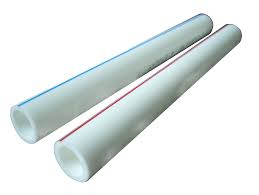Dec . 15, 2024 18:17 Back to list
HDPE Pipe Size Specifications and Manufacturing Standards for Optimal Performance
Understanding HDPE Pipe Sizes A Comprehensive Guide
High-Density Polyethylene (HDPE) pipes are widely utilized in various industries due to their strength, durability, and flexibility. They are favored for numerous applications including water supply, wastewater treatment, drainage, and even telecommunication. One of the key aspects of HDPE pipes is their sizing, which can significantly impact the efficiency and cost-effectiveness of a project. In this article, we will explore HDPE pipe sizes, their standard measurements, and their importance in manufacturing and application.
What is HDPE?
High-Density Polyethylene, or HDPE, is a thermoplastic polymer made from petroleum. It is known for its high strength-to-density ratio, making it suitable for structural applications like piping. HDPE pipes have become increasingly popular due to their resistance to corrosion, lightweight design, and easy installation properties.
Standard Sizes of HDPE Pipes
HDPE pipes come in various sizes to accommodate diverse applications. The dimensions and sizing are typically standardized to ensure compatibility and ease of use across different projects. The two primary metrics used to define HDPE pipe sizes are the Outer Diameter (OD) and the Nominal Pipe Size (NPS).
1. Outer Diameter (OD) The external measurement of the pipe, which is crucial for determining fittings and installation compatibility. 2. Nominal Pipe Size (NPS) A standardized designation that simplifies the description of pipe dimensions. NPS is not the actual diameter but a close approximation, making it easier for professionals to communicate pipe sizes.
HDPE pipes are commonly classified into two major categories based on their pressure classes SDR (Standard Dimension Ratio) and SIDR (Standard Irrigation Dimension Ratio). The SDR is a measure of the ratio of the pipe's diameter to its wall thickness. A lower SDR number indicates a thicker pipe wall, which can withstand higher pressure.
Common HDPE Pipe Sizes
HDPE pipes are available in a range of sizes, typically from ½ inch to 63 inches in diameter. Standard sizes include
hdpe pipe sizes factory

- HDPE 1/2 to 4 Used primarily for residential applications such as water supply lines and irrigation systems. - HDPE 6 to 12 Commonly employed in larger residential and commercial applications, such as drainage systems and industrial water transfer. - HDPE 14 to 48 Generally used for large-scale projects, including municipal water supply and sewage systems. - HDPE 54 to 63 Utilized in particularly heavy-duty applications, such as large wastewater and stormwater management systems.
The selection of an appropriate size depends on various factors, including the intended application, flow requirements, and pressure ratings
.Importance of Choosing the Correct Size
Selecting the right size of HDPE pipes is crucial for several reasons
1. Flow Efficiency An appropriately sized pipe ensures that the fluid can flow freely without unnecessary resistance or pressure loss. Oversized or undersized pipes can lead to inefficiencies. 2. Cost-Effectiveness Using the right size can help minimize material costs. Larger pipes typically cost more, not just in terms of purchase price but also installation expenses. Proper sizing can lead to a more economical project overall.
3. System Compatibility Ensuring that the pipe size matches existing systems and components, such as fittings, valves, and pumps, can save time and avoid complications during installation.
4. Regulatory Compliance Various sectors may be governed by standards that dictate specific pipe sizes for compliance with local regulations. Ensuring the correct size can help meet these requirements.
Conclusion
Choosing the right HDPE pipe size is vital for ensuring effective performance, cost efficiency, and compliance with regulations. Familiarization with the standard sizes, measurement methods, and the implications of sizing can lead to better decision-making in both manufacturing and application processes. Whether for residential use or large-scale industrial projects, understanding HDPE pipe sizes will fundamentally contribute to the long-term success and sustainability of piping systems. As the demand for HDPE pipes continues to rise, staying informed about the available sizes and specifications is more important than ever for engineers, architects, and contractors alike.
-
Durable UPVC Column Pipes for Submersible Pumps | Efficient Water Flow
NewsAug.14,2025
-
DN100 PVC Well Casing Pipes - Durable & Corrosion-Resistant
NewsAug.13,2025
-
Flexible 32mm HDPE Pipes in Coil | Durable Water & Gas Lines
NewsAug.12,2025
-
DN50 HDPE Pipes in Coils: Flexible, Durable & Easy Install
NewsAug.11,2025
-
32mm HDPE Pipes in Coil: Durable, Flexible, Easy Install
NewsAug.10,2025
-
140mm PVC Drilling Pipe: Durable & Efficient Well Casings
NewsAug.09,2025

